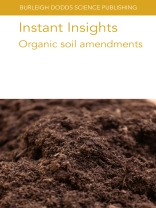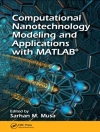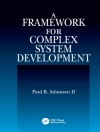- Considers the effects of applying organic amendments to soil and the environment
- Reviews the main technologies used to convert livestock manure into biofertiliser or bioenergy sources
- Includes case studies which detail the benefit and risks of using compost in two different agricultural settings
قائمة المحتويات
- Chapter 1 – Organic fertilizers and biofertilizers: Lidia Sas Paszt and Slawomir Gluszek, Research Institute of Horticulture, Poland;
- 1 Introduction
- 2 Biofertilizers
- 3 Consortia of microorganisms to improve the effectiveness of organic fertilization
- 4 Animal excrement: manures, slurry and guano
- 5 Products and by-products of animal origin
- 6 Products and by-products of plant origin for fertilizers
- 7 Composts
- 8 Untreated minerals and by-products of selected industrial processes
- 9 Biochar
- 10 Conclusion
- 11 Where to look for further information
- 12 References
Chapter taken from: Kӧpke, U. (ed.), Improving organic crop cultivation, Burleigh Dodds Science Publishing, Cambridge, UK, 2019, (ISBN: 978 1 78676 184 2)
- Chapter 2 – Assessing the effects of compost on soil health: Cristina Lazcano, University of California-Davis, USA; Charlotte Decock, California Polytechnic State University, USA; Connie T. F. Wong, University of California-Davis, USA; and Kamille Garcia-Brucher, California Polytechnic State University, USA;
- 1 Introduction
- 2 Why compost?
- 3 Effects of compost on soil nutrient cycling
- 4 Effects of compost on soil hydraulic properties
- 5 Effect of compost on crop productivity
- 6 Effects of compost on soil biodiversity
- 7 Effects of compost on environmental quality
- 8 The use of compost to improve soil health in annual crops: a case study with strawberries
- 9 The use of compost to improve soil health, sequester carbon and reduce greenhouse gas emissions in perennial crops: a case study
- 10 Conclusion
- 11 Where to look for further information
- 12 References
Chapter taken from: Horwath, W. R. (ed.), Improving soil health, Burleigh Dodds Science Publishing, Cambridge, UK, 2023, (ISBN: 978 1 78676 670 0)
- Chapter 3 – Optimizing slurry management: David Fangueiro, LEAF-Instituto Superior de Agronomia-ULisboa, Portugal; Jihane Elmahdi*, Wageningen University and Research, The Netherlands; Jared Nyang’au, Aarhus University, Denmark; Stamatis Chrysanthopoulos, LEAF-Instituto Superior de Agronomia-ULisboa, Portugal; Jerke De Vries, Wageningen University and Research, The Netherlands; and Peter Sørensen, Aarhus University, Denmark;
- 1 Introduction
- 2 Current decision tools for optimizing manure management
- 3 Modifying animal slurry p H to enhance its value as a biobased fertilizer: (bio)-acidification and alkalinization
- 4 Improving manure management systems to minimize trade-offs
- 5 Combining manure management with anaerobic digestion
- 6 Preand post-treatment of biomass for anaerobic digestion
- 7 Optimization of anaerobic digestion operations to optimize digestate quality
- 8 References
Chapter taken from: Chapter taken from: Amon, B. (ed.), Developing circular agricultural production systems, Burleigh Dodds Science Publishing, Cambridge, UK, 2024, (ISBN: 978 1 80146 256 3)
- Chapter 4 – Optimizing livestock manure as a biofertilizer and bioenergy source: V. Riau, L. Morey, R. Cáceres, M. Cerrillo, and A. Bonmatí, Institute of Agrifood Research and Technology (IRTA), Spain; and A. Robles, BETA Tech Center (UVIC-UCC), Spain;
- 1 Introduction
- 2 Anaerobic digestion
- 3 Mechanical separation
- 4 Composting
- 5 Struvite precipitation
- 6 Stripping/scrubbing
- 7 Membrane filtration
- 8 Bioelectrochemical systems
- 9 Case study: farm for the future
- 10 Conclusion and future trends
- 11 Where to look for further information
- 12 References
Chapter taken from: Chapter taken from: Amon, B. (ed.), Developing circular agricultural production systems, Burleigh Dodds Science Publishing, Cambridge, UK, 2024, (ISBN: 978 1 80146 256 3)
عن المؤلف
Dr Víctor Riau currently works at the Sustainability in Biosystems program of the Institute of Agri-food Research and Technology (IRTA). Dr Riau’s research is focused on chemical and environmental engineering, organic waste (water) treatment and valorisation, biogas production, nutrient removal and recovery and emission characterisation and mitigation












